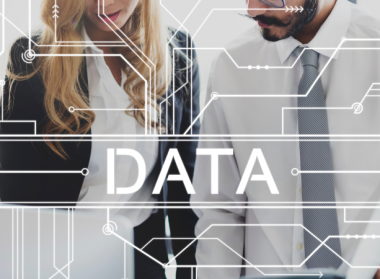From dealing with the challenges of worldwide pandemics to navigating political instability and ecological disasters, doing business in the modern world requires a proactive and forward-thinking approach.
Creating plans that help keep operations running, sales accumulating, and customers happy are part of protecting business resilience—i.e., your company’s ability to respond with agility and flexibility to preserve operational performance and competitive strength in the wake of a serious disruption.
You need smart and adaptable measures in place to protect your team, your assets, and your ability to do business when the going gets rough.
Making business resilience planning part of your overall business process optimization plan can help ensure your company is ready to roll with the punches—and come up swinging—when disruptions, disasters, and other challenges threaten your business continuity and growth.
What is Business Resilience Planning?
Doing business is an inherently risky proposition. A variety of internal and external factors can expose your organization to a slew of potential risks that can literally make or break your business.
Minimizing these risks can take a wide array of forms. Traditionally, companies have focused on efficiency, accuracy, cost, and proximity to limit risk within their value and supply chains.
Disaster recovery has been roughly on par with, or even prioritized above, disaster prevention.
Business interruptions, while considered inevitable, nevertheless possessed the potential to create major business disruptions even with such planning. Crisis management and restoring business functions were after-the-fact concerns.
However, today’s global economy, with its intricate and lengthy supply chains and data-driven methodologies that themselves have multiple dependencies subject to risk, requires consideration of additional factors.
The speed of doing business, the fiercely competitive marketplace, and a global economy awash in Big Data means an ounce of risk prevention is worth not just a pound, but perhaps a ton, of disaster recovery.
A 2020 report from the McKinsey Global Institute indicates businesses can expect, on average, a significant supply chain disruption lasting a month (or longer!) every 3.7 years.
Businesses competing in today’s market need to balance the competitive strength provided by advanced technologies and data-driven insights with strategic risk and crisis management planning to minimize operational and financial impacts in the event of a disaster.
Business resilience planning seeks to shift the paradigm to prioritize prevention and proactivity over traditional models of recovery and loss mitigation.
It goes hand in glove with business continuity management (also called business continuity planning), which formalizes a company’s prevention, response, and recovery strategies for dealing with business disruptions in both the supply and value chains.
To the traditional concerns of cost efficacy, overall efficiency, and immediate access of resources, business resilience planning adds transparency and agility to the list of priorities.
Ultimately, the goal of an effective business continuity plan is to provide a flexible framework that combines strategic proactivity with disaster recovery planning to ensure intelligent responses to business disruptions.
Business resilience planning seeks to shift the paradigm to prioritize prevention and proactivity over traditional models of recovery and loss mitigation. It goes hand in glove with business continuity planning, which formalizes a company’s prevention, response, and recovery strategies for dealing with business disruptions in both the supply and value chains.
A Volatile World: Why Business Resilience Planning Matters
The risk of doing business, regardless of industry, is directly connected to vulnerability to business disruption, whether from normal business activities or from disastrous (or even cataclysmic) events.
Like earthquakes, the latter create an initial level of disruption and/or devastation, followed by continued damage or disruption over time.
Exceptional events are often more difficult to predict and manage than their jejune counterparts, but the twenty-first century marketplace is experiencing significant shocks with greater regularity, and greater severity, than ever before.
Achieving business resilience in these conditions means making emergency management and prevention a core component of your business continuity program (BCP).
Consider these potential, and all too common, business disruptions:
Cyberattacks
Big Data drives big leaps in productivity and profits—and helps companies compete and innovate. But dependency on advanced robust data centers, data management technologies, and data analytics for competitive strength also carries additional risk exposure.
Without proper cybersecurity measures, everything from operational continuity to sensitive personal information (including customer data) can be compromised by opportunistic hackers and thieves.
Climate-Based Events
Some climate-based events are seasonal, such as hurricanes and tornadoes, and are part of affected business’ normal risk assessments and action plans.
But as mounting evidence indicates, global climate change is creating new business risks and threats to continuous business operations, including water scarcity, supply chain disruptions and resource outages due to extreme weather and natural disasters, and financial burdens imposed by compliance with emission standards, to name a few.
Pandemic
As the COVID-19 pandemic showed the world, illness can cripple not just the workforce, but the entire economy.
Companies need proactive and intelligent recovery strategies—and effective action plans for risk prevention—to insulate against not only damage to their employees’ health, but logistical, operational, and compliance-based disruptors in order to avoid serious damage to their profits and productivity.
Global Conflict
International political conflict, war, and terrorism all pose significant threats to supply chains that span the globe.
They not only create localized disruptions to supply chains, but can create ancillary risk through destruction of infrastructure or suspension of critical business functions throughout an entire organization.
Internal Events
Theft, fraud, and workplace violence are all serious risks for both large and small businesses alike.
Proactive human resources management is an integral part of business continuity planning, and a first wave of defense against shocks that come from within an organization rather than without.
In their 2020 report, McKinsey estimates the total value of the value chains at risk from shock created by disruptions and catastrophes to be somewhere in the neighborhood of $4.4 trillion dollars in exports each year (i.e., roughly a quarter of global trade).
They also estimate companies experiencing a significant business interruption that leads to sustained production downtime (e.g., 100 days) could expect to lose 30%; to 50% of their annual profits (or more). If distribution and logistics are also impacted, the losses could climb even higher.
It makes excellent sense, then, to invest the time and resources necessary to develop a business continuity management plan centered on risk assessment and business resiliency to minimize (or, ideally, eliminate) the shocks and disruptions that can cripple critical business functions.
Putting Business Resilience Planning to Work for Your Organization
Disasters and disruptions affect different businesses in different ways. But you can create the foundations for a flexible, resilient, and proactive BCP by following a few best practices.
1. Look Beyond Emergency Response
Having a clear action plan in place for emergency management is an essential part of successful business continuity planning.
But to minimize downtime, outages, and disruptions—and their associated expenses—your business continuity plan should include plans for what happens before as well as during and after a disaster.
Some of the essential items to include in your BCP are:
- Business Impact Analysis (BIA): Your team should begin by identifying, evaluating, and then prioritizing the impact of potential business disruptors. This analysis lays the groundwork for prioritization of prevention, mitigation, and recovery strategies.
- Risk Assessment (RA): Part of BIA, but should be applied in detail to all potential business risks.
- Risk Management Plan: Developed based on BIA and overall risk assessment.
- Essential Functions: Set a clear hierarchy of essential business functions, the parties responsible for their execution, and contingencies related to preserving continuity when disaster strikes.
- Vital Records Plan: Identify essential records (including personal information) that must be preserved.
- Readiness Guidelines: Formal documentation providing clear instructions and explanations related to risk prevention, risk mitigation, and disaster recovery strategies. May include detailed recovery time objectives, special instructions for first responders, social media guidelines, etc. May further include specifics on delegation of authority, overall command hierarchy during and after incidents occur, and any succession contingencies required.
- Communications Protocol: Guidelines for maintaining, restoring, or establishing communication between team members in the event of a disaster.
- Alternate Site Contingencies: Clear information on all processes related to transferring or resuming operations to another facility.
- Emergency Response Plan: Detailed information on responding to a variety of disruptors.
- All-Clear/Return to Standard Operating Procedures Plan: Recovery-focused procedures to be followed once operations and other essential business processes have been confirmed or restored.
2. Implement Digital Data Management and Analysis Tools
For businesses navigating today’s economy, the impact of digital transformation is hard to overestimate.
Artificial intelligence, cloud-based data consolidation and management, and advanced data analytics offer businesses of all sizes the opportunity to harvest actionable insights from their data.
Implementing software that features these tools—including comprehensive procurement solutions such as PLANERGY—supports business continuity planning in several important ways:
- Increased data accuracy, integrity, and transparency.
- Real-time, role-appropriate access to essential data.
- Powerful analysis tools accessible via dashboards to parse your performance, compliance, and financial data for insights you can use to develop nuanced, versatile action plans for a variety of potential events.
- Improved collaboration and communication.
- Cloud-based, mobile-friendly software environment accessible from multiple devices and platforms to help preserve continuous business operations regardless of location.
- Automation of essential business processes and implementation of continuous improvement initiatives help insulate against risk proactively by eliminating human error, wasted resources, and improving operational efficiency across the board.
- Vendor integration tools make it easier to evaluate and onboard suppliers to diversify your supply chain and create contingency-based redundancies that preserve operational continuity with minimal downtime.
3. Minimize Your Risk Exposure
The best partner for an all-star recovery plan is a set of preventative measures that render it unnecessary.
Your business processes contain a multitude of opportunities to insulate your organization against disruptions before they can cripple your business.
Examples include:
- Building contingency-based redundancy into your supply chain.
- Prioritize transparency; document all critical business processes and hierarchies.
- Incorporate all relevant data streams into your data management and analysis protocols; analyzed together, diverse data sources can reveal potential vulnerabilities and new opportunities for continuity preservation.
- Standardize and simplify business operations to reduce material and service dependencies.
- Optimize local and distributed cybersecurity to strengthen your infrastructure and essential data against cyberattacks.
- Harden facilities and essential equipment against natural disasters, climate change (e.g., increasing cooling to compensate for rising ambient temperatures, adding additional seals to protect against increased flooding, etc.), terrorist activities, and civil unrest.
- Prioritize operational efficiency and productivity; use data analysis to identify opportunities for further streamlining.
Business Resilience Planning Helps You Weather Life’s Storms
In an uncertain and increasingly interconnected world, protecting vital records, business continuity, and your team members against natural disasters, cyberattacks, pandemics, and other business disruptions takes careful planning.
Make business resilience part of your business continuity planning by using digital tools to analyze risk and develop prevention and recovery strategies you can rely on to keep the lights on, production running, and profits growing when crises come to call.




